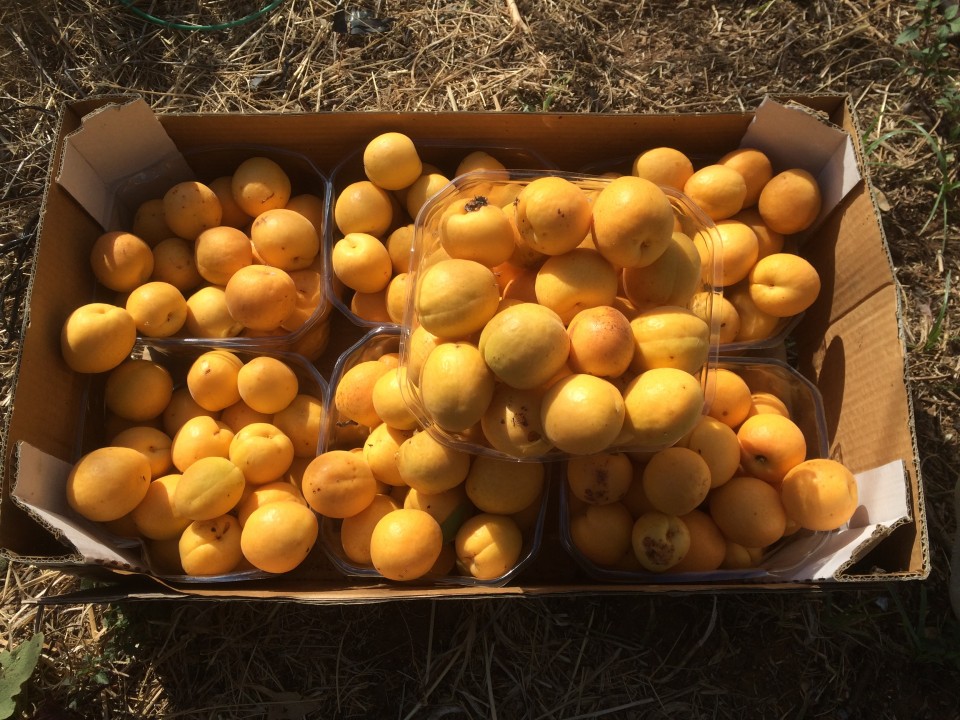Apricots
Nutritional Benefits and Healing Properties of Apricots
I have quite a large fruit garden and towards the back of it, I have a wonderful apricot tree that has been with me for at least 20 years now. Each year in spring, as soon as the fruits form, I enlist anyone who’s around to help cover the tree with a special type of netting, to prevent the Mediterranean fruit fly from reaching the fruit and laying its eggs (uggghhh). Once the tree is covered, all I need is patience mixed with diligence, for once the fruit is ripe, I’ve got less than a week before the fruit starts to fall off the tree. There’s a saying in Arabic for this phenomena – Bukrafil Mishmish - which roughly means, if you’re not quick, you’ll miss all the apricots.
Apricot seems like a simple fruit, but it is a nutritional powerhouse and one of the most healing fruits you can eat. Apricots are high in amino acids, and magnesium in their most bioactive forms. The fruit contains more than 40 trace minerals, creating bioactive alloys yet to be fully discovered. Apricot is also rich in beta carotene, organic iron, copper and cobalt, making them beneficial for anemia, digestive disorders and reproductive health, as well as autoimmune disorders such as chronic fatigue, rheumatoid arthritis, fibromyalgia, asthma, lupus, colitis, IBS and PCOS. Apricots assist in removing toxins and binds with pesticides found deep within the body, thus assisting in lowering the risk of cancer. Apricot also boosts the growth of red blood cells, strengthens the heart and nourishes the brain. The kernel within the fruit contains vitamin B17, amygdalin, which many believe is effective in preventing and treating cancer.
Apricot has a warming energy, is both sweet and sour, and tastes like sunshine and the beginning of summer. Apricot lifts the spirit and can revive the body when we have been beat down or pushed to our limits. On an energetic level, apricot opens our hearts and paves the way for self love, as well as love for others.
When in need, even one apricot will benefit us greatly. For those battling illness, 4 apricots a day will give that much needed boost. Apricots are at their best after 3:00 PM, when the fruit’s nutrients are at their highest levels and are most bioactive. I try my best to pick them in the late afternoon, when the weather is more cooperative, yet because their season is so short, I often start grazing in the morning and continue till night. Apricots are healthiest when eaten ripe, and that may be its only setback – the short window of opportunity between being ripe and falling off the tree. Luckily apricots are easy to freeze on dry, and make fantastic “leather”.
I recommend this recipe for those who have access to abundant apricots and are looking for a way to preserve them. Apricot leather makes a healthy snack, loved by all.
Pour about 2 cups of the mixture on to baking paper placed on a large tray. Put the trays out in the sun under a netting, and comes evening, bring them back inside (to prevent exposure to condensation), and then out they go again the next morning. After a couple of days, when the mixture has leather like texture, and you can peel it off the baking paper, they’re ready to be stored in the refrigerator – homemade fruit leather, nothing tastes better.
Bon Appetit
Beth
Information in this blog has come from | Anthony Williams, Medical Medium, Life-Changing Foods, Carlsbad: Hay House Publishing, 2016.



